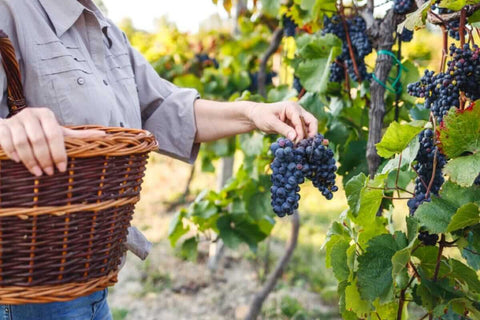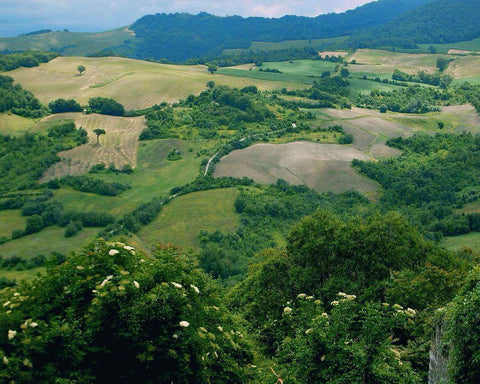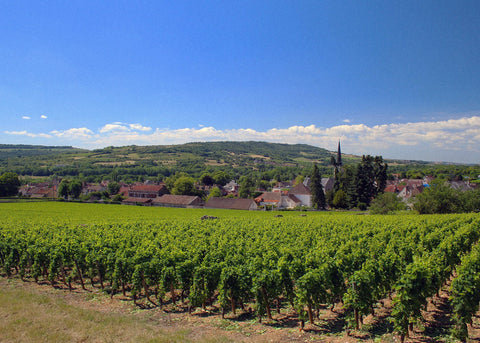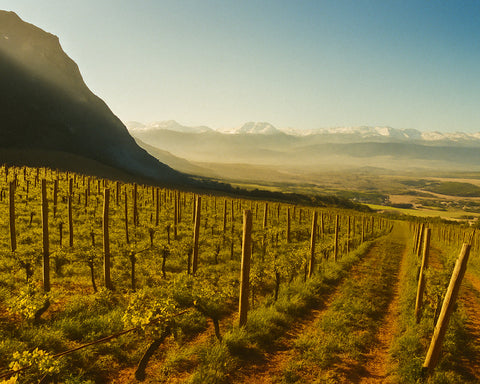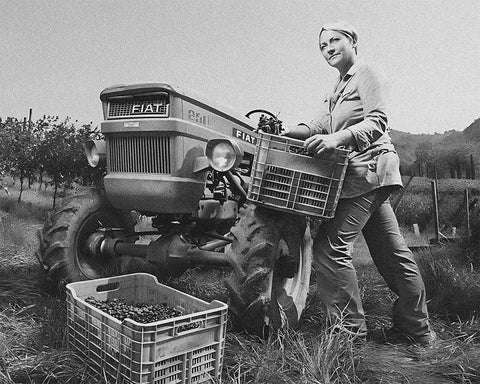Wine aromas offer insights into the wine’s varietal character, production methods, and maturation process. These aromas are classified into three categories: primary, secondary, and tertiary, each representing a different origin and stage in the wine's development.
Table of Contents
- Primary Aromas
- Secondary Aromas
- Tertiary Aromas
- What are Terpenes?
- What are Aldehydes?
- What are Pyrazines?
Primary Aromas
Primary aromas, or varietal aromas, are the direct reflection of the grape's phenotype and the environmental factors of its terroir. These are the initial scents perceived, resulting purely from the fruit itself and the climatic conditions in which it was grown.
Varietal Characteristics
The spectrum of primary aromas spans from the citrus zest in a high-acidity Riesling to the dark berry characteristics in a concentrated Syrah. Specific grape varieties possess inherent aromatic compounds; for instance, the pyrazines in Cabernet Sauvignon contribute to its green bell pepper notes, while the terpenes in Muscat offer pronounced floral aromas.
Terroir-Driven Profiles
Terroir imparts distinct mineral and earth-driven profiles to wine. For instance, the scent of wet stones or flint in a Loire Valley Chenin Blanc can be attributed to the mineral composition of its terroir, showcasing the significance of geological influence on the primary aroma profile of natural and organic wines.
Secondary Aromas
Secondary aromas arise from the fermentative and post-fermentative winemaking processes. These scents are not inherent to the grapes but are the result of yeast metabolism, malolactic fermentation, and the influence of winemaking techniques.
Vinification Influences
Yeasts, responsible for converting sugars into alcohol, contribute scents like fresh bread, as found in traditional method sparkling wines, or the lactic buttery character in Chardonnay undergoing malolactic fermentation. The choice of yeast strain and fermentation conditions can significantly influence these secondary aromas.
Maturation Impact
Oak barrel maturation lends a suite of secondary aromas, from the vanilla and sweet spices due to lignin breakdown to the smoky or toasted notes from the charred wood surface. The winemaker’s barrel regime, including the choice between American and French oak, toast level, and barrel age, intricately shapes this aromatic dimension.
Tertiary Aromas
Tertiary aromas, emerge as the wine ages in the bottle. These complex aromas are the result of slow oxidative and reductive processes, which alter the primary and secondary aromatic compounds into a harmonious and intricate bouquet.
Bottle Aging Complexity
With bottle aging, wines develop a range of tertiary aromas such as the nuttiness in aged Sherries, the mushroom or forest floor in mature Pinot Noir, or the tobacco and leather notes in cellared Cabernet Sauvignon. These aromas are indicators of the wine’s evolutionary stage and are revered for adding depth and complexity to the sensory profile.
Oxidative Aroma Development
Exposure to oxygen, whether intentional as in the case of oxidative winemaking styles, or through the gradual ingress in bottle, transforms the molecular structure of aroma compounds. Oxidation can yield rich and robust tertiary notes like dried fruit, caramel, and almonds, which are characteristic of oxidative maturation in wines like vintage Port or some natural and organic wines aged under a veil of yeast.
What are Terpenes?
The aromatic landscape of wine is greatly influenced by a class of compounds known as terpenes. These naturally occurring organic compounds are not just prevalent in the viticultural sphere but are also found in a variety of plants around the world. Their presence in wine, which can manifest as floral, citrus, or even spicy notes, is primarily derived from the grape skins, imparting distinctive olfactory qualities to each varietal.
Terpenes are responsible for some of the most enchanting and recognizable aromas in wine. Varietals such as Muscat and Gewürztraminer owe their intensely fragrant profiles to this group of compounds. Terpenes also lend the characteristic citrus notes to Riesling and contribute to the aromatic complexity of many other wines. Below are some key terpenes and the aromas they are associated with:
Linalool
Linalool is a terpene that is frequently associated with aromatics akin to lavender, orange blossom, lily, and bay leaves. It imparts a delicate floral touch to wines like Torrontés from Argentina, which often exhibits a strong bouquet reminiscent of these scents.
Geraniol
Geraniol is the essence behind the smell of rose petals, a distinct note in varietals such as Pinot Noir and Grenache, where it adds a layer of aromatic complexity to the wine's profile.
Nerol and Citronellol
Both nerol and citronellol contribute to the floral and citrusy bouquet found in numerous white wines. Viognier, for example, is known for its perfumed aroma, a result of these terpenes working in harmony.
Limonene and Citral
The zesty, refreshing flavors often detected in wines like Chardonnay and Semillon are attributed to limonene and citral, compounds that are also found in citrus peels, enhancing the wine's fresh and lively character.
Hotrienol
Hotrienol delivers the scent of linden blossom and is also part of the complex aroma profile of Sauvignon Blanc, contributing to its distinctive elderflower notes.
1,8-Cineole and Alpha-Pinene
The aromatic presence of eucalyptus in many Australian red wines, such as Cabernet Sauvignon from Coonawarra, is due to 1,8-cineole, which is naturally found in eucalyptus trees. Similarly, alpha-pinene, which imbues the scent of juniper and rosemary, is detected in the red wines of Southern France, including those from the Languedoc-Roussillon region, known for their garrigue-like quality.
Rotundone
In the case of red wines, which undergo fermentation with their skins, the presence of robust and stable terpenes such as rotundone can be significant. This sesquiterpene, known for its association with the aroma of peppercorns, imparts a spicy, peppery note to wines such as Syrah from the Rhône Valley, Australian Shiraz, and the peppery undertones of Austrian Grüner Veltliner.
What are Aldehydes?
Aldehydes are a group of organic compounds that significantly influence the aroma profiles of wines. Through their presence, they contribute a range of scents from vegetal to sweetly aromatic nuances, which are prized in the olfactory complexity of wine.
Green and Vegetal Aromas
Hexanal and hexenal play a pivotal role in imparting the scents of freshly cut grass and tomato leaf, which are particularly prominent in Sauvignon Blancs from regions like New Zealand's Marlborough or the Loire Valley in France. The varietal expression of Sauvignon Blanc is often synonymous with these green, herbaceous notes, largely due to these aldehydes.
Vanillin and Oak Influence
Vanillin is an aldehyde well-known for its role in creating vanilla flavors. In winemaking, it is a byproduct of fermenting or aging in oak barrels. The species of oak has a substantial impact on the level of vanillin present in the wine. American oak species, Quercus alba, are often noted for their higher vanillin content compared to their French counterpart, Quercus robur. Thus, a buttery California Chardonnay or a robust California Zinfandel may exhibit pronounced vanilla characteristics due to the American oak aging process.
Benzaldehyde: Nutty and Bitter Aromatics
Benzaldehyde is known for contributing the scent of bitter almond or marzipan, a trait that is particularly noticeable in aged Pinot Gris or certain Italian white wines like those from the Garganega grape. This compound may also emerge in aged sparkling wines, where it adds to the complexity of the bouquet.
Furfural: The Scent of Aging and Oxidation
Furfural offers aromas of dried wood, caramel, and wheat bran. This compound is often found in oak-aged wines, where it results from the decomposition of oak lignin over time. Furfural's presence is indicative of the oxidative processes and maturation in barrels, contributing to the toasty, caramelized notes in wines such as aged Rioja or vintage Port.
What are Pyrazines?
Pyrazines are chemical compounds that contribute to the herbaceous and vegetal aromas in certain wines. Methoxypyrazines are particularly noteworthy for their ability to impart distinctive green notes.
Methoxypyrazines and Varietal Characteristics
Methoxypyrazines are responsible for the green bell pepper notes in Cabernet Sauvignon and the pronounced leafiness in Carmenère, defining aspects of their varietal character. Wines from the Sauvignon family, such as Sauvignon Blanc, particularly from cooler climates like the Loire Valley or New Zealand, often exhibit these pyrazine-driven aromas. Bordeaux’s Médoc region, famed for its Cabernet Sauvignon, also showcases these compounds in its complex flavor profile.
Indicator of Ripeness
In some grape varieties, methoxypyrazines can indicate a level of underripeness. This presence manifests as a sharp, almost acrid herbaceousness. Wines made from grapes harvested early in the season, or from cooler growing regions, may exhibit higher levels of these pyrazines. Conversely, grapes allowed to ripen fully under optimal conditions tend to have lower concentrations, resulting in a more balanced expression of green notes.
Examples in Winemaking
Aside from Cabernet Sauvignon and Carmenère, other varieties such as Merlot and Franc may also contain methoxypyrazines, although typically in lower quantities. The influence of terroir, viticultural practices, and climatic conditions plays a significant role in the expression of these compounds in the resulting wine.

